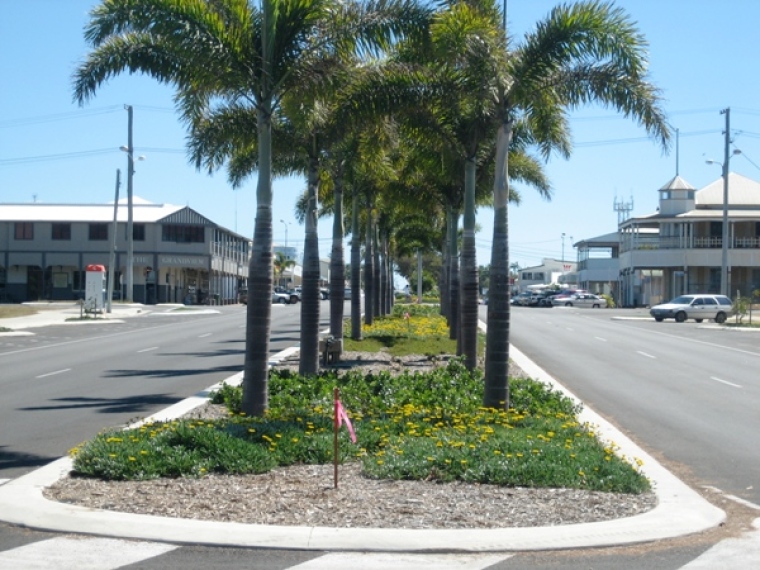
The film 'Australia' was set in the Northern Territory from the late 1930's and through to the bombing of Darwin on 19 February 1942. This was a Baz Luhrmann film centering on a number of issues, including that of the discrimination against both the Aboriginal community and those of half cast birth. (www.australiamovie.net)
Mark Tronson saw the film 'Australia' at the cinema and has revisited it on both DVD and when shown on television. The scenery in the film is spectacular to say the least, but the bombing of Darwin was to him, the most interesting past of the movie.
As an avid reader of the bombing of Darwin, it was therefore of great interest to him to view how a cinematic photographer would best illuminate the viewers as to the situation in Darwin when the Japanese bombed the city.
Several things can be said at this point. The presentation in the film 'Australia' was indeed graphic with the capture of the panic that any such announced bombing would bring any community. More than that though, it demonstrated the fog of war, that when bombs start dropping and huge explosions disintegrate buildings along with well known landmarks, with dust and smoke all around, it is not all that easy to find your way around.
The noise of the aircraft coming into their attack patterns illustrated the frightening nature of an air attack was presented with alarming true to life picture of what it was like being on the receiving end of the bombing that led to such much destruction.
Therefore it was of much interest to shown when in Bowen, where this filming took place, the position of the hotels, where the vehicles were blown up simulating the air attack and how the film makers created the imagery of what took place on the 19 February 1942 in Darwin.
Perhaps it is at this point we can review what actually happened in Darwin. Although many Australians at the time were kept in the dark about it, Darwin was bombed by the Japanese, starting on February 19th 1942. In fact, there were a total of 64 air raids on Darwin and 33 on other parts of Northern Australia.
Katherine, for example had 90 bombs dropped upon it, as there was an air base there. Today, as a tourist site, a bomb crater in a near-by paddock has been preserved. Broome suffered perhaps the worst of all attacks when every Catalina flying boat in the harbour was sunk and the streets full of people were strafed.
Mark Tronson in 2010 led a Country Town Tour Mission to the Northern Territory and took the opportunity to investigate much of this for himself. Now, having seen the film 'Australia' and read the books, and reviewed Bowen and how the film makers presented it, he believes that he can make some observations.
Officially it is now estimated that approximately 250 civilians were killed on the first day, and 278 military personnel were still missing three days later. Over the entire raid, there were approximately 1,000 casualties. Unofficially and supported by local historians there were well over a 1,000 deaths plus those who were injured.
The privately funded book 'No Stamp Available' which Mark Tronson purchased from the author Albert James, (who was a young lad in Darwin at this time), and whose father was an official ARP (Air Raid) made some comments.
In it is an allusion to the fact that the Post Office was destroyed on that first day of bombing, killing the telephone exchange girls, the post master and his entire family. Any letters were given to people high-tailing it out of Darwin, travelling south and posting letters at the first post office they came to.
In the book, James also states that there were so many bodies washed up on the shore after that first day (plus bodies from the town), that they were just loaded into several barges and buried at sea. These people seem to have never been recorded in the official death tally. It may also explain the missing military personnel that were never found, that are now mentioned on official Government information sites mentioned above. No-one will ever know, now.
Over the next few weeks Mark Tronson will detail what occurred and how it affected the nation then and now. The film 'Australia' certainly gave a glimpse. Sometimes it is years after such a traumatic event, that eve-witness accounts come to light, that add more to the puzzle of the fog of war.
Last week US President Barrack Obama laid a reef when in Darwin, remembering the US servicemen who died during the bombing of Darwin.
Dr Mark Tronson is a Baptist minister (retired) who served as the Australian cricket team chaplain for 17 years (2000 ret) and established Life After Cricket in 2001. He was recognised by the Olympic Ministry Medal in 2009 presented by Carl Lewis Olympian of the Century. He has written 24 books, and enjoys writing. He is married to Delma, with four adult children and grand-children.
Mark Tronson's archive of articles can be viewed at www.pressserviceinternational.org/mark-tronson.html
